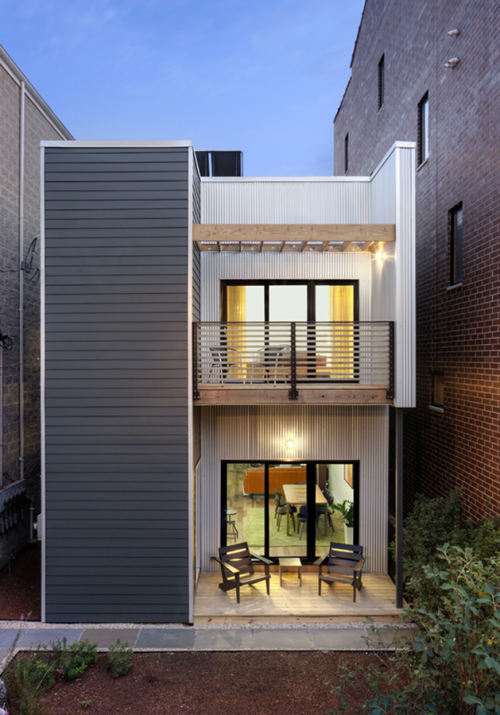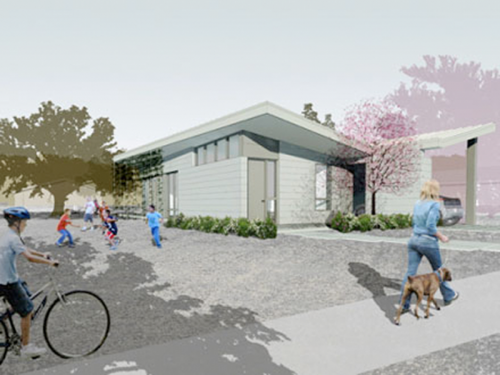Electric car buying guide.
electric car buying guide. electric vehicles offer more driving fun. via sierra club [nOnnIs]
electric car buying guide. electric vehicles offer more driving fun. via sierra club [nOnnIs]
 click > enlarge
click > enlarge
Patricia Urquiola‘s Vieques collection isn’t her first line of furniture for Spanish retailer Kettal. Her Maia collection, an outdoor series, won the AD Architectural Design Award in 2008. With Vieques, Urquiola continues to pursue her interest in combining new technology with traditional craftsmanship.
“I like finding the most suitable material for each project,” Urquiola says. “Working on technologically developed materials using craft techniques, or using an industrial process on a material from the past.” For Vieques she strove to “maintain the lateral aluminum double moulding, but with a seat and back similar to taut netting, a soft and pleasant grid, in three dimensions, which we have achieved after two years of research.”
Yes, you read that correctly. Urquiola spent two years researching and developing a totally new, revolutionary 3D fabric called Nico d’Ape, available in a rainbow of colors for the Vieques indoor/outdoor collection.


 click > enlarge
click > enlarge
If you’ve visited the Guggenheim lately you may have seen Earth Blocks – no, not the ones used to build houses (though those are really cool, too). I’m talking about the kid’s version, Earth Toy Earth Blocks, which are like sustainable Legos. Made from a composite of cedar tree bark, compressed saw dust, coffee beans and green tea leaves, the blocks don’t come in shades of red, blue or yellow. In fact, you’d better hope your kid likes dark green and brown a lot.
They’re a lot softer than Legos, which means it won’t hurt as much when you accidentally step on one, but The Wall Street Journal points out that since they’re softer and don’t snap together as tightly as Legos, they’re “less than ideal for making lightsabers.” And since the blocks do actually smell like coffee and tea, they’re probably better suited for the big kids out there. I can’t be the only who never outgrew her Legos, right?
You buy them from the Guggenheim online, $30 for 50 blocks.



With all the recent achievements in modular building, prefab is no longer a dirty word. The latest design to prove that prefab can bring affordability and good design together is the C6, a new prefabricated house by LivingHomes. The C6 boasts 3 bedrooms, 2 baths, an open floor plan “and lots of storage, light and warmth,” and it’ll set you back only $179,000.
“This is our first affordable LivingHome. It was designed by LivingHomes staff in collaboration with Make It Right, a nonprofit founded by Brad Pitt and architect William McDonough to build 150 affordable, sustainable homes in New Orleans’ Lower Ninth Ward, the neighborhood hardest hit by Hurricane Katrina. A portion of the proceeds from the sale of each C6 will help support the efforts of Make It Right.”
You can even configure your own dream home right on LivingHomes’ site. Choose an LEED level from Certified to Platinum, how many square feet of decking you want and customize the interior with flooring, cabinet and appliance options. If you need more rooms or bigger space, there are options for that, too. No one said prefab meant cookie-cutter. All you need to build you very own dream house is a piece of land – though a sense of design and maybe a construction team might help.



 click on photos to enlarge
click on photos to enlarge
The C3 Prefab project, is a prototypical example a prefabricated sustainable residence (Chicago’s first) constructed in an urban environment.


C3 sets a high standard for energy efficiency by surpassing the current energy code by 54%, and becoming the first model for sustainable, affordable housing in Chicago. Reducing the upfront cost of housing is only part of the equation. The compounded savings by reducing energy usage gives homeowners an additional $282,000 at 10% over a 30-year period.

The C3 was designed to meet the LEED Platinum and Energy Star standards with low-tech, common sense solutions in lieu of expensive gadgetry. Many materials used were sustainably harvested as well as sourced through local vendors to encourage economic growth within the region. To date, this project has received Energy Star.
Relative to this project, the word ʻprefabʼ means that portions of the home were constructed off-site and shipped to the project location once the foundation and utilities were prepared. There are many prefab benefits. There’s a higher level of quality control within a factory setting. No “bad weather” means year-round, simultaneous construction for speedier delivery and timelines are more predictable. And an economy of labor and material Reducing labor and through the use of repetitive assembly lines and volume purchasing.
[ sustainable materials | benefits ]
• Uses 54% less energy and produces 64% less emissions then a comparable home. • Energy savings of over 70% in water heating costs due to solar thermal panels and on-demand water heating.
• Recycled content, low-maintenance exterior siding (galvalume corrugated and fiber cement board), and reclaimed barnwood siding.
• Low-VOC water based sealants and finishes; cabinetry and woodwork that contain no formaldehyde or toxic binders.
• Water-conserving plumbing fixtures and energy-efficient appliances and lighting; at least 80% of lighting is either compact fluorescent or LED.
• Recycled/sustainably harvested flooring (hickory and cork).
• Efficient floor plan with high ceilings and substantial natural light and ventilation reduce lighting and heating/cooling loads.
• Ductless, high-efficiency heating & air conditioning system provides quiet operation and controlled zoning for higher level of interior comfort.
• Heat Recovery Ventilator (HRV) provides continuous outdoor air circulation without energy loss.
• Natural native landscaping provides minimal maintenance and utilizes reclaimed storm water for irrigation.
• Roof is designed for future roof deck, vegetated green space, and photovoltaic (electricity producing) solar panels.
• All wood framing is FSC certified.
[ project data ]
designer: architect square root architecture + design jeffrey sommers
location: chicago usa
project size: single-family | 2039 sqft
hers rating: 46
[ resources ]
manufacturer: Hi-Tech Housing
general contractor: Helios Design + Build
energy consultant: The Sylvan Company
green rater/energy rater: Energy Diagnostics
interior furnishings: Post 27
landscape architect: KMS Gardens and Design
solar panel design & installation: Solar Service, Inc
mechanical consultant and installation: Ardmore Fresh Air
window consultant: Murphys Windows
[ materials and products ]
hvac system: Fujitsu Ductless
windows & doors: THV Compozit
kitchen & bath cabinetry: EcoUrban Collection
lighting consultant: Lightology
low-vov paint: Color Eco Paint Boutique
corrugated galvalume siding: Firestone UnaClad
cement board lap siding: James Hardie
floor & wall tile: Dal-Tile
erv: RenewAire
tankless water heater: Noritz
information/contact: architect square root architecture + design jeffrey sommers

At 9:45 pm on May 4th, 2007 an EF5 tornado leveled the rural town of Greensburg, Kansas. Just days after the storm, the community came together and decided to rebuild sustainably, striving to become a model green town for the future. Ever since this landmark commitment was made, Greensburg GreenTown – a grassroots community-based organization – has worked side-by-side with city and county officials, business owners and local residents to incorporate sustainable principles into their rebuilding process.
As part of the rebuilding plan The Chain of Eco-Homes project was launched in the winter of 2009. It is a series of demonstration eco-homes designed to be “living laboratories” featuring a variety of building techniques, prices, sizes, energy efficiency features, and green living products and services. Each home will be unique, and serve both as an informational center and as eco-lodging where visitors can experience green living first-hand. The eco-homes will also be monitored to demonstrate how each type of construction technology performs under local conditions, and to determine actual energy savings.
Three home designs, winners in a design competition, will drive the project. The latest eco-home, the Meadowlark House, will follow a building standard that has been around for over two decades but remains relatively unknown in the United States. That standard, called Passive House, was developed in Germany by two professors starting in the late 1980s. It was brought to the U.S. in 2006 by the Passive House Institute U.S.
The standard is a design process, not a supplemental program to a building – meaning its components have to be taken into account from the beginning of a project. The design of a Passive House centers around six principles used together to create an extremely energy efficient home: passive solar design, super-insulation, high performance windows, airtightness, ventilation, and space heating. Through the use of Passive House, energy needs are reduced up to 90% compared to traditional, conventionally built homes. The team is also aiming for LEED-Platinum status. [ greensburg – green town ]
 now at national building museum shop
now at national building museum shop
Eco-friendly paper tableware made of reed pulp, bamboo, and bagasse (sugarcane waste), which is usually discarded in the process of making sugar. Fully biodegradable.
[ national museum shop ] [ wasara ]
<a href=" about phil patton
about phil patton

the world’s most versatile electric motorcycle.
designed to be agile in the dirt and quick on the street, the zero ds. powered by the most advanced drive train in the industry, the zero ds is a fully electric motorcycle that can handle any surface you can throw at it. navigating obstacles and maintaining control is accomplished using a specially developed suspension system and a rugged wheel set. bike features an innovative quick charge option that cuts the charging time in half. normal charge time is two hours. range 58 miles.
[ zero motorcycles ]
Green Building 101: Using Bioclimatic Design to Build a Passive, Sustainable Dwellings. via reuters [RK]

oogst 1000 wonderland
is a self-sufficient farm, restaurant, hotel and amusement park for 1,000 people per day.
All food is produced in a self sustainable manner within the structure of Oogst. Frank Tjepkema: ‘Oogst 1000 combines extreme fun with extreme usefulness, and as such, is the first example of ecotainment pushed to the limits.’ See Oogst 1000 come to life here, in a one minute animation.
Oogst by Tjep. will be part of Hyperlinks, an exhibition grouping a diversity of projects exploring, and more importantly, fading out the border between the fields of architecture and design. December 11 thru July 20, 2011. The Art Institute of Chicago.
All content ©2007 > 2024 DesignApplause